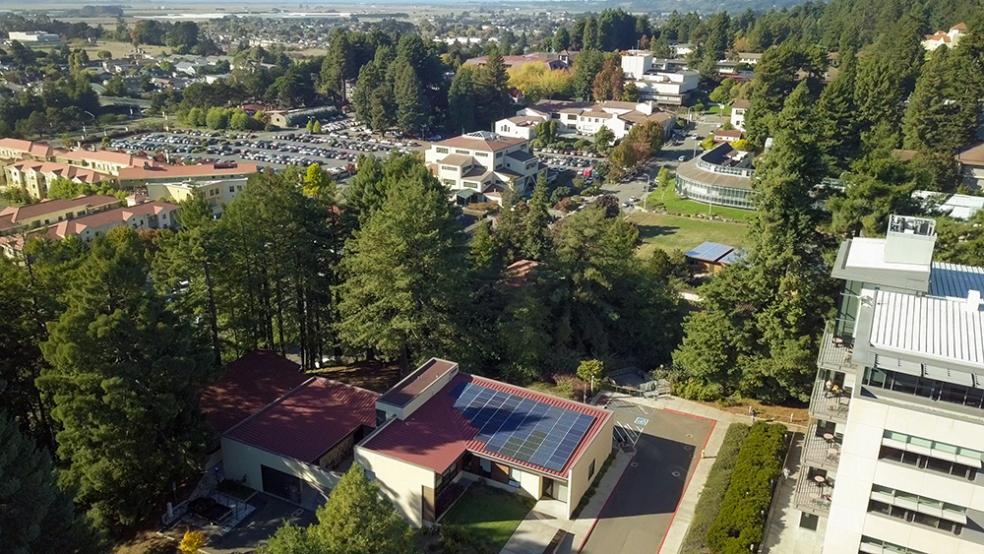
The microgrid has been designed by Cal Poly Humboldt’s Schatz Energy Research Center and will be a solar+battery system with 2.1 megawatts of AC solar and a 5.8 megawatt battery with 11.6 megawatt-hours of energy storage capacity. This will allow the campus to stay independently powered on clean energy for up to two days, depending on weather conditions.
The microgrid’s solar panels will be installed on some campus buildings. Additionally, some parking lots, like G11, will have solar canopies covering parking spaces.
Following the unprecedented public safety power shutoff (PSPS) events throughout California in the summer of 2019, Cal Poly Humboldt began considering a microgrid solution for keeping the campus fully powered year-round.
A widespread outage caused by a 6.4-magnitude earthquake in December 2022 and a multi-week outage in neighboring Del Norte County caused by fires in September 2023 made the importance of campus energy resilience even more clear.
Under normal conditions, the campus microgrid will be able to both generate energy onsite and import energy from the main utility grid. During a local outage, the microgrid will “island” and operate independently of the main power grid to provide ongoing electricity to campus facilities.
A leader in renewable energy research and development, the Schatz Center has a strong track record of success in the design and implementation of microgrids. Recent projects include two microgrids for the Blue Lake Rancheria and the state’s first 100% renewable multi-customer microgrid at the Redwood Coast Airport. During the 2022 earthquake, these sites were some of the only facilities in Humboldt to maintain power, making them a literal beacon in the dark.
Beyond keeping the lights on, Cal Poly Humboldt’s campus microgrid will be a concrete demonstration of renewable energy, showing students how much power is being generated and stored, and how the microgrid operates.
Students in the School of Engineering and other programs, for example, will have the opportunity to take practical courses that prepare them for careers working with microgrids, resilience, and clean energy systems, and will gain critical skills for responding to our changing world.
To learn more about the Schatz Center, visit schatzcenter.org.